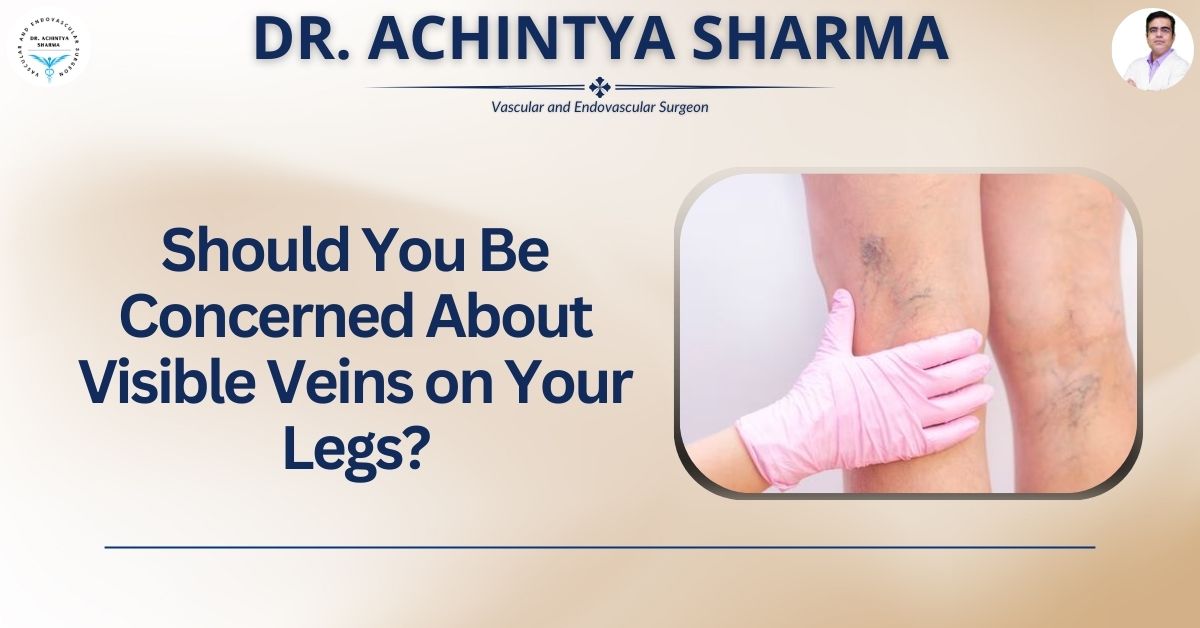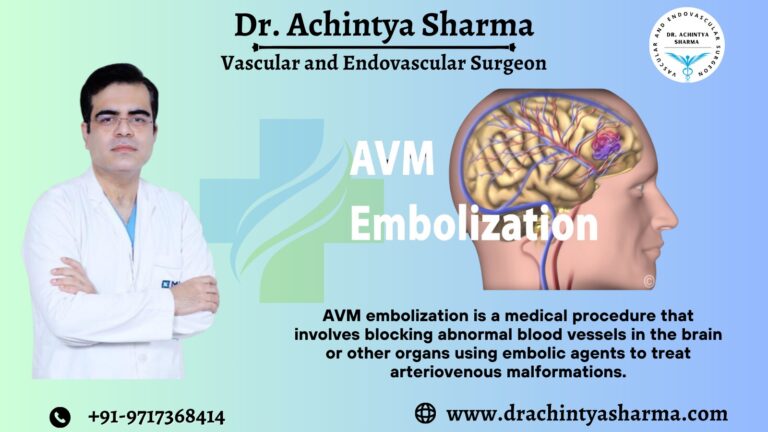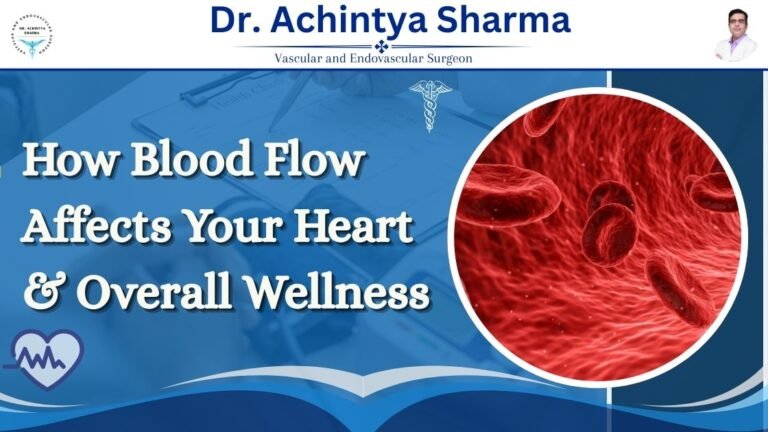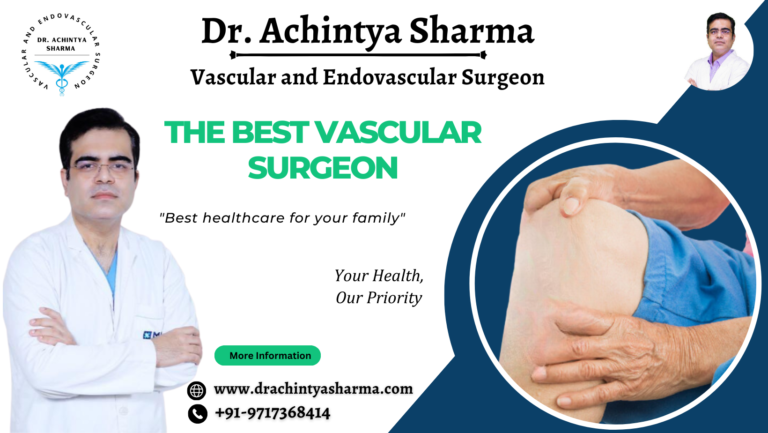Have you ever looked down at your legs and noticed obvious veins? While this might feel concerning at first, visible veins on the legs are a common phenomenon that affects many individuals. Understanding the reasons behind prominent leg veins is essential whether it’s due to lifestyle factors, aging, or medical conditions. Dr. Achintya Sharma, a renowned expert in vascular health, explains the common causes, prevention strategies, and treatment options for visible veins on the legs in this insightful guide. All in a simple manner. Read on to learn more and reclaim your confidence!
Are Visible Veins on Your Legs a Cause for Concern?
Visible veins on the legs often appear as blue, green, or purple lines under the skin. These veins can range from subtle and flat to bulging and rope-like. While they’re often harmless, they can sometimes indicate an underlying issue. Visible veins may occur due to various reasons such as thin skin, genetics, or venous conditions like varicose veins and spider veins.
Dr. Achintya Sharma explains, “It’s crucial to distinguish between normal and problematic veins. While some people’s veins are naturally more visible due to skin tone or physical activity, others might experience vein visibility due to venous insufficiency, which requires medical attention.”
Why Are Visible Veins on Legs So Common?
Visible veins are more common than you think, studies show that up to 23% of adults suffer from varicose veins, and a significant number deal with spider veins. These statistics highlight how prevalent vein visibility is, making it a relatable concern.
Key factors contributing to visible veins include:
- Age: As we age, our skin becomes thinner and veins become more apparent.
Trick: Use moisturizers with collagen-boosting ingredients to support skin elasticity.
- Genetics: If your family has a history of visible veins, you’re more likely to develop them.
Tip: Stay proactive with regular leg exercises and a healthy diet.
- Lifestyle: Standing or sitting for long periods, obesity, and lack of exercise can put pressure on your veins.
Trick: Take short walks or do calf stretches every hour if you sit or stand for long periods.
- Pregnancy: Hormonal changes and increased blood flow during pregnancy can lead to visible veins.
Tip: Wear compression stockings during pregnancy to support blood flow.
- Sun Exposure: Overexposure to the sun can damage skin and make veins more noticeable.
Trick: Always apply sunscreen to your legs before heading outside.
Did You Know? Visible veins don’t always mean there’s a health problem. In many cases, they’re simply a cosmetic concern.
When Should You Be Concerned?
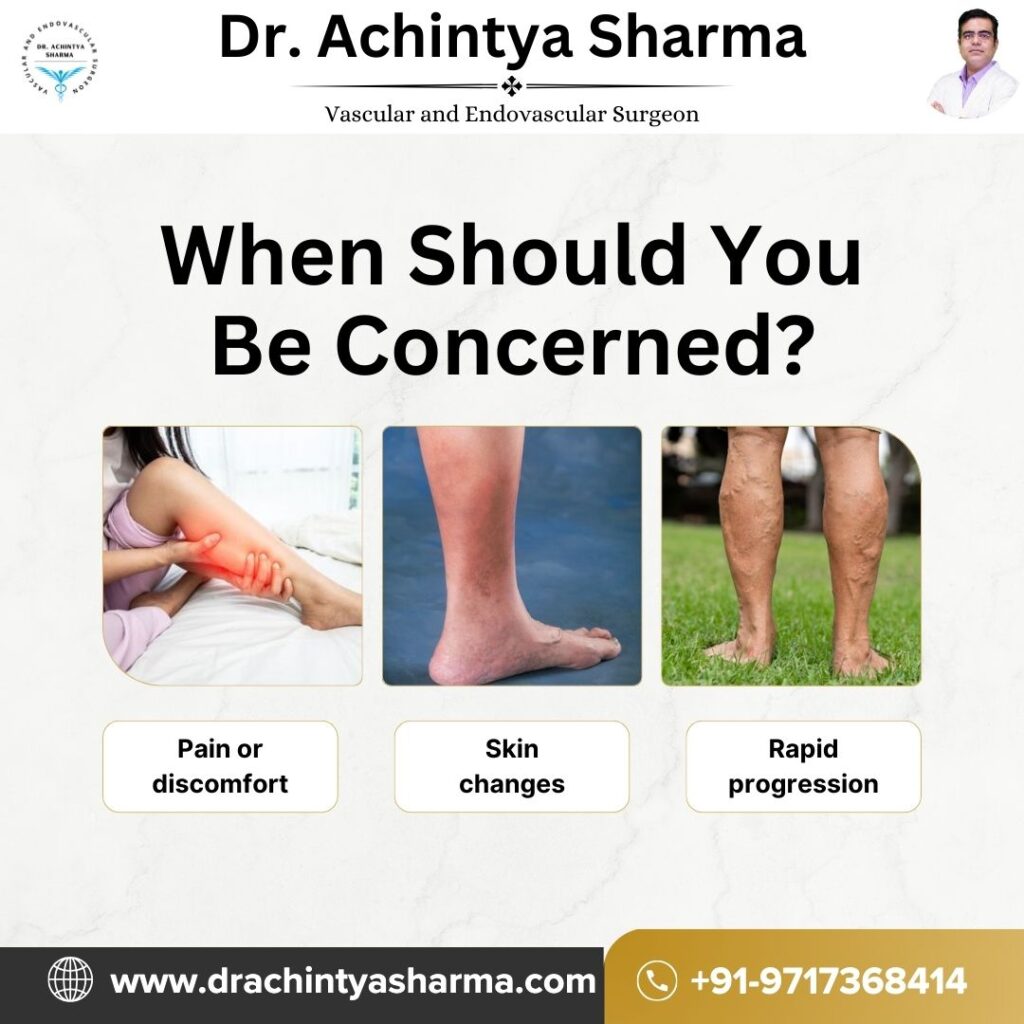
While visible veins are often harmless, there are times when they could indicate a medical issue. Here are a few indicators to keep an eye on:
- Pain or discomfort: Aching, heaviness, or swelling in the legs may suggest venous insufficiency.
- Skin changes: Discoloration, itching, or ulcers near the veins might point to a more serious condition.
- Rapid progression: If your veins become more prominent over a short period, it’s worth consulting a specialist.
Dr. Achintya Sharma advises, “Listening to your body is key. If you’re experiencing symptoms alongside visible veins, seek medical advice to rule out underlying issues.”
Solutions for Visible Veins on Legs
The good news is that there are several solutions for managing visible veins, ranging from lifestyle changes to medical treatments. Here are some effective options:
Lifestyle Adjustments:
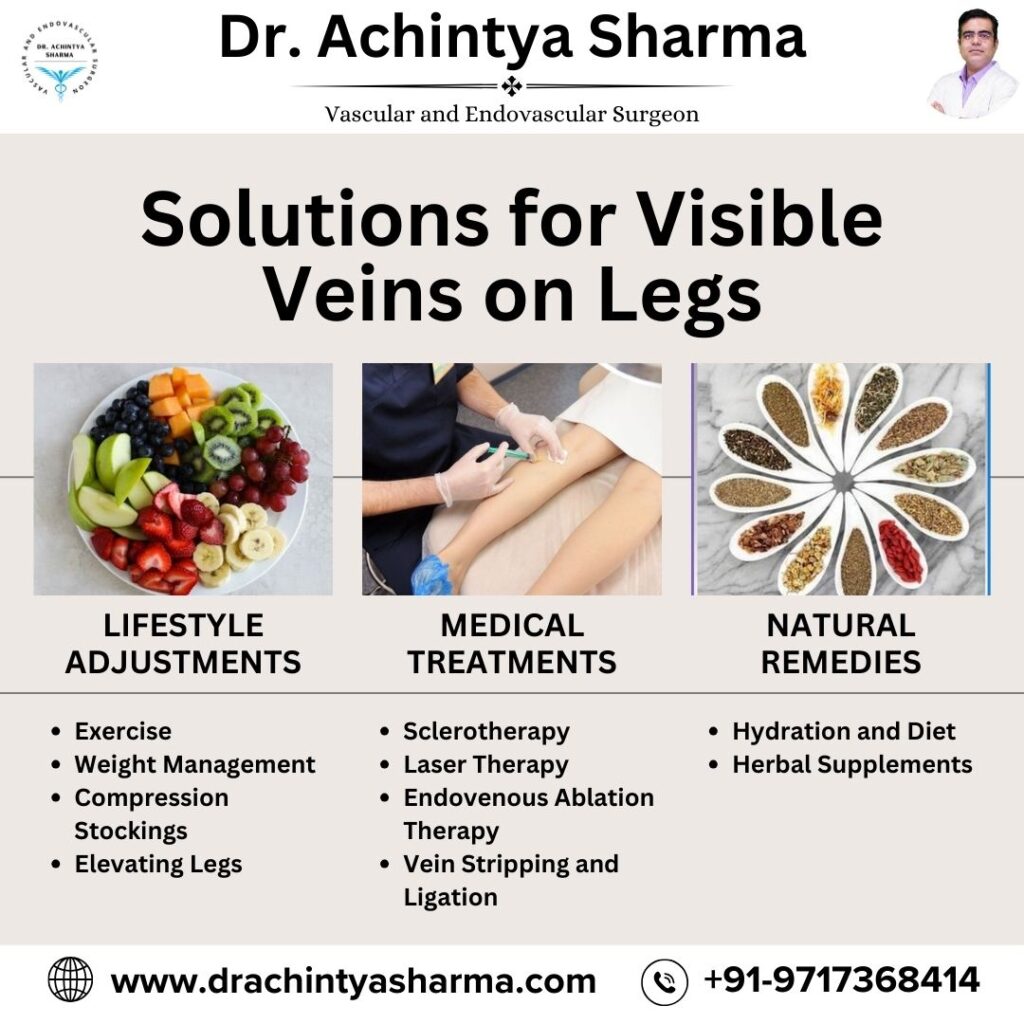
- Exercise: Regular physical activity improves blood circulation and strengthens vein walls.
- Weight Management: Staying at a healthy weight takes stress off your veins.
- Compression Stockings: These help boost circulation and lessen swelling.
- Elevating Legs: Resting with your legs elevated can reduce venous pressure.
Medical Treatments:
- Sclerotherapy: A minimally invasive procedure where a solution is injected into the vein, causing it to collapse and fade over time.
- Laser Therapy: Uses light energy to treat spider veins and small varicose veins.
- Endovenous Ablation Therapy: A modern technique that uses heat to close off problematic veins.
- Vein Stripping and Ligation: A surgical option for severe cases of varicose veins.
Natural Remedies:
- Hydration and Diet: Drinking plenty of water and eating foods rich in vitamin C can improve vein health.
- Herbal Supplements: Horse chestnut extract and grape seed extract are known for supporting venous health.
What Should You Do Next?
If you’re concerned about visible veins, take action today:
- Observe: Keep an eye on any changes in appearance or symptoms.
- Consult an Expert: Schedule an appointment with a vascular specialist like Dr. Achintya Sharma to get a professional evaluation.
- Adopt Healthy Habits: Incorporate vein-friendly practices into your daily routine.
Taking these steps ensures you stay proactive about your vascular health while addressing any aesthetic concerns.
Conclusion
Visible veins on the legs are often caused by weakened vein walls and poor blood flow, leading to conditions like varicose and spider veins. Factors such as heredity, prolonged standing or sitting, hormonal changes, aging, obesity, and lack of physical activity play a significant role in their development. These veins may appear thin and web-like or thick and bulging, along with symptoms like aching, heaviness, swelling, or discoloration. While they can be a cosmetic concern, visible veins may also indicate underlying health problems. Dr. Achintya Sharma emphasizes that addressing this condition through prevention and treatment is crucial for both your health and self-confidence.
Start your journey to healthier veins today—because your legs deserve the best care!

